Panama Canal
Major Infrastructure
Since its completion in 1914, the Canal has carried most of the ship traffic transiting between the Atlantic and the Pacific.. The Canal was the largest item of infrastructure built in the world at that time.


Entering the Canal
All gather to watch as we enter the Canal at Colón, heading directly south toward the Pacific.

Going Up!
The first three locks lift us 27 meters to the level of Gatún Lake. This lake was formed by damming the Chagres River. which had stopped de Lesseps from building a sea-level canal.
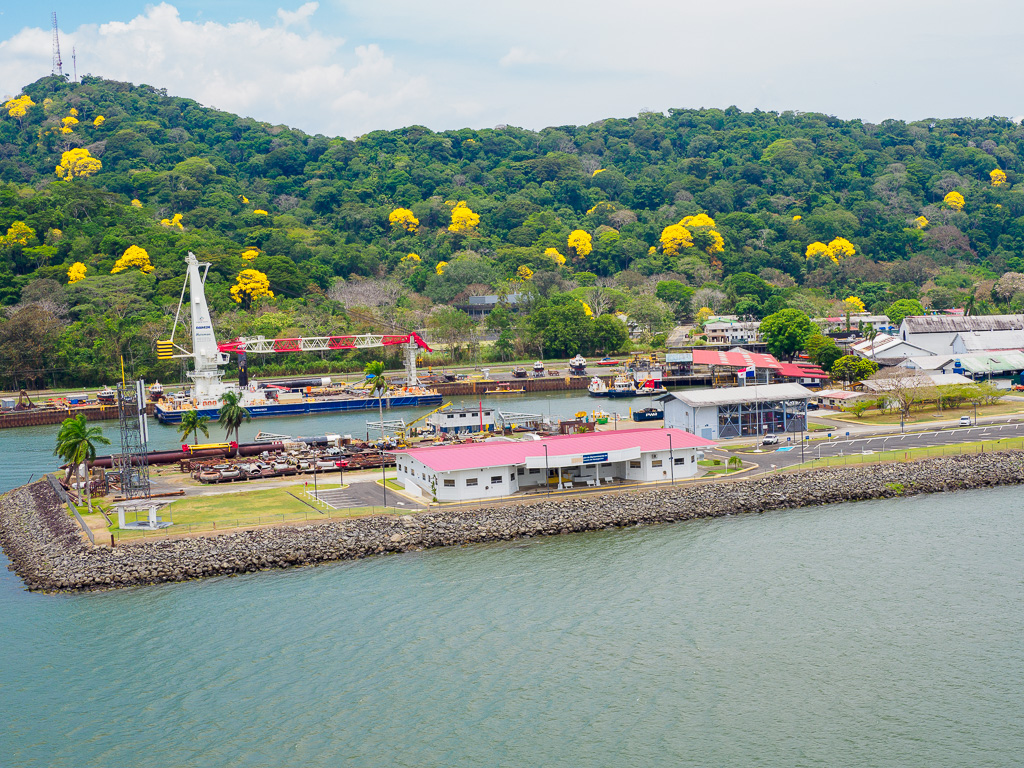
Reserve Water
For years the “prism” of fresh lake water passing through a lock each time it operated was simply thrown away with each fill of each lock. But now the Chagres is short of water, so lock water is pumped out and saved for reuse where possible.

On High
The three locks on the Atlantic side have lifted us 27 meters, so now we are cruising through fresh lake water.
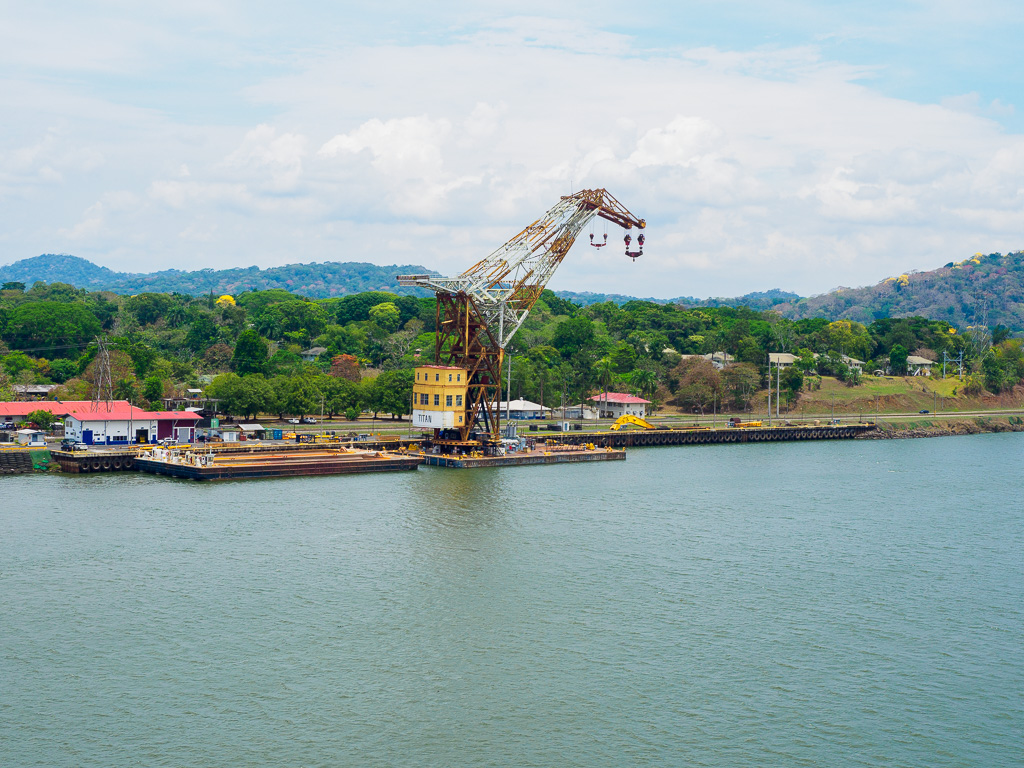
Constant Construction
Dredges have to keep moving all the time to keep ahead of the crumbling canal walls.
The Culebra Cut
The Culebra Cut at the southern end of Gatún Lake, was the most difficult to build because of its notoriously unstable geology.

Crumbling Soil
In Culebra, the soil is particularly subject to landslips. The surrounding hillsides have to be carved into terraces, each equipped with special drainage, to keep the soil dry enough to stay in place. It still slides enough to require frequent dredging.
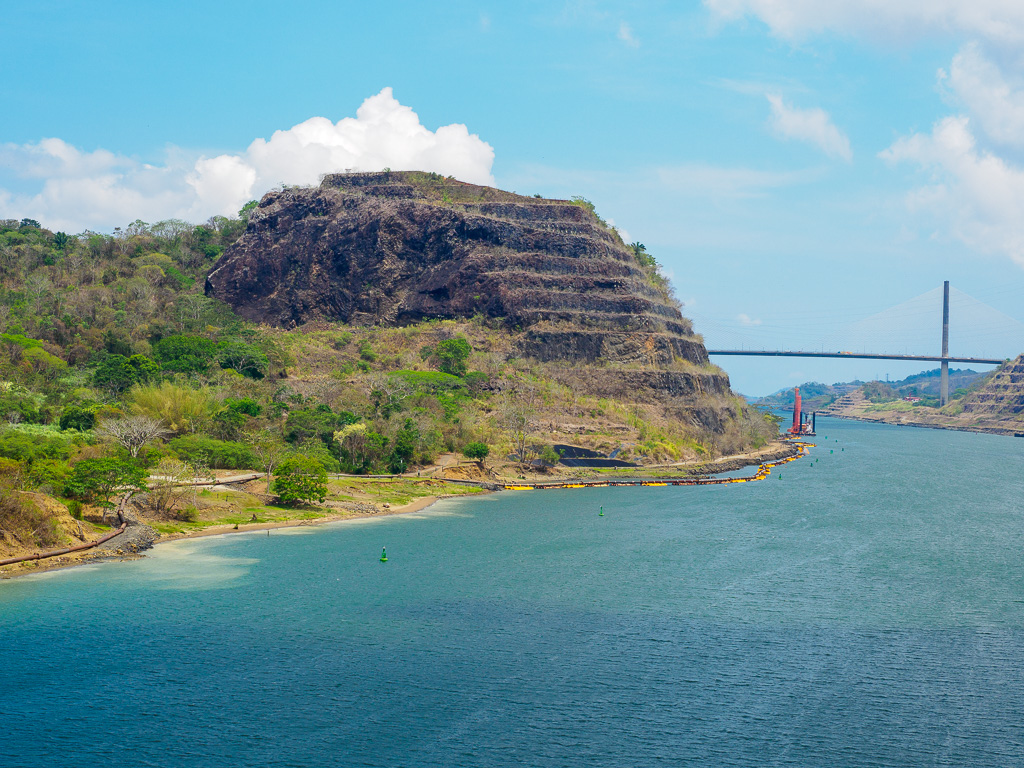
The Centennial Bridge
Completed in 2004, it carries the Pan-American Highway from Alaska to its break at the Darien Gap, south of Panama. When the Highway resumes in Colombia, it runs all the to the southern tip of Argentina.
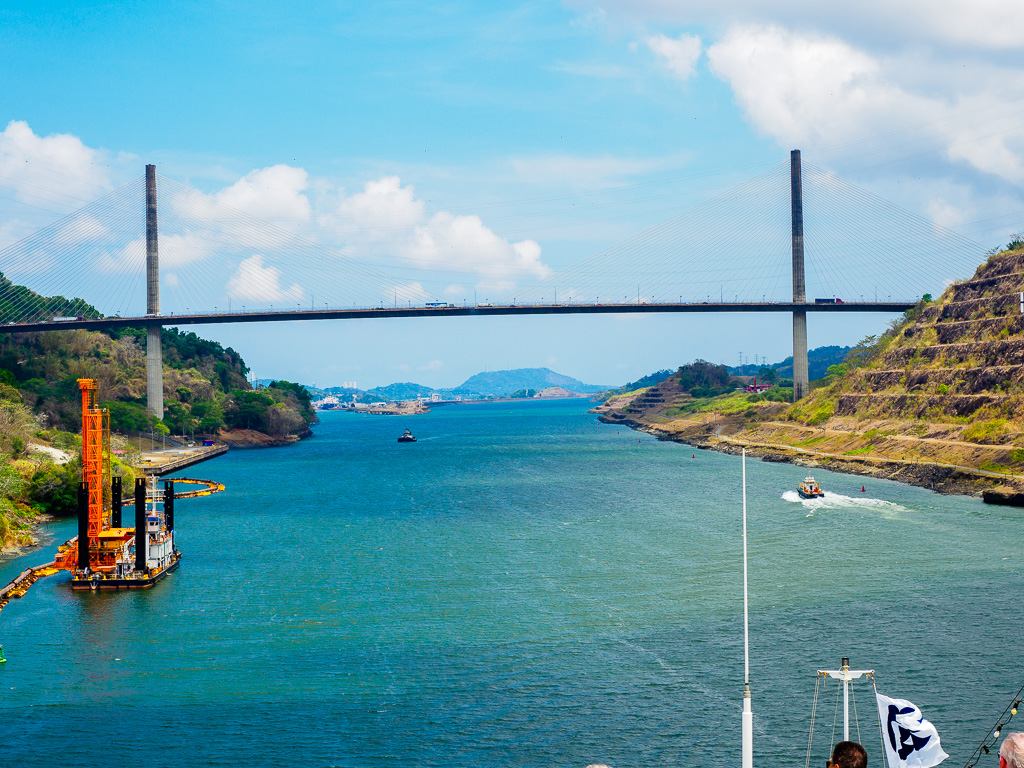
A New Bridge
The Pan-American first crossed the Canal at the All-American Bridge near the Panama City end, but that bridge is now needed for local traffic.

Flowering Trees
Most of the Canal is surrounded by rainforest.
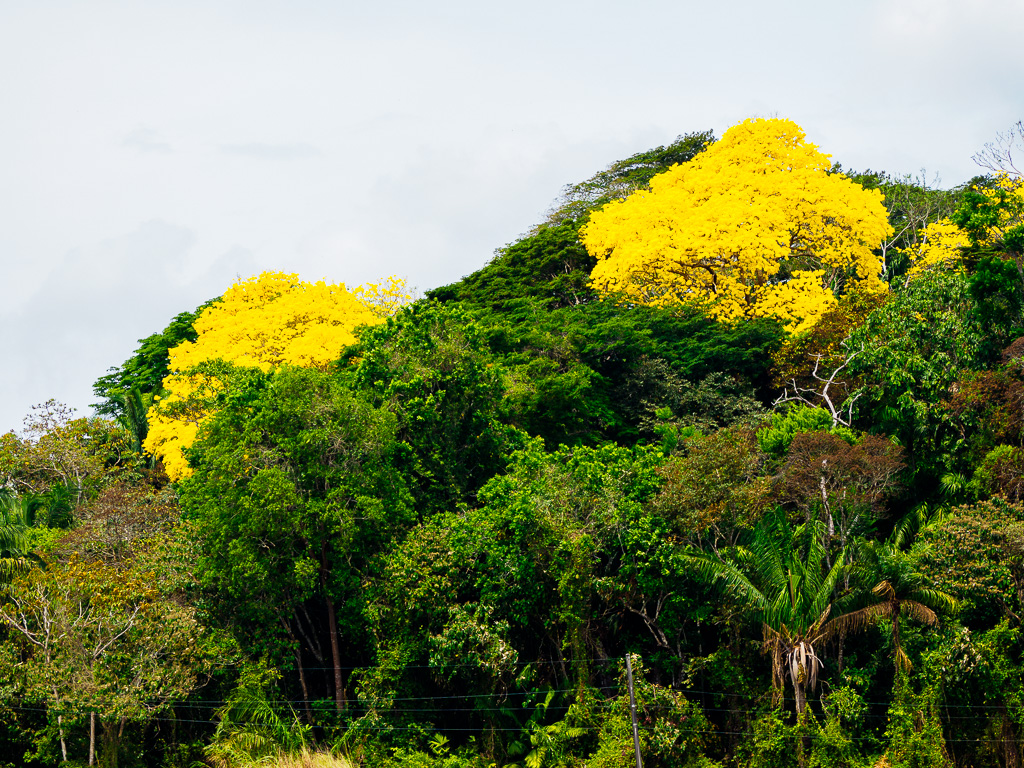
Stabilizing the Soil
There is constant construction in the Cut because of landslides
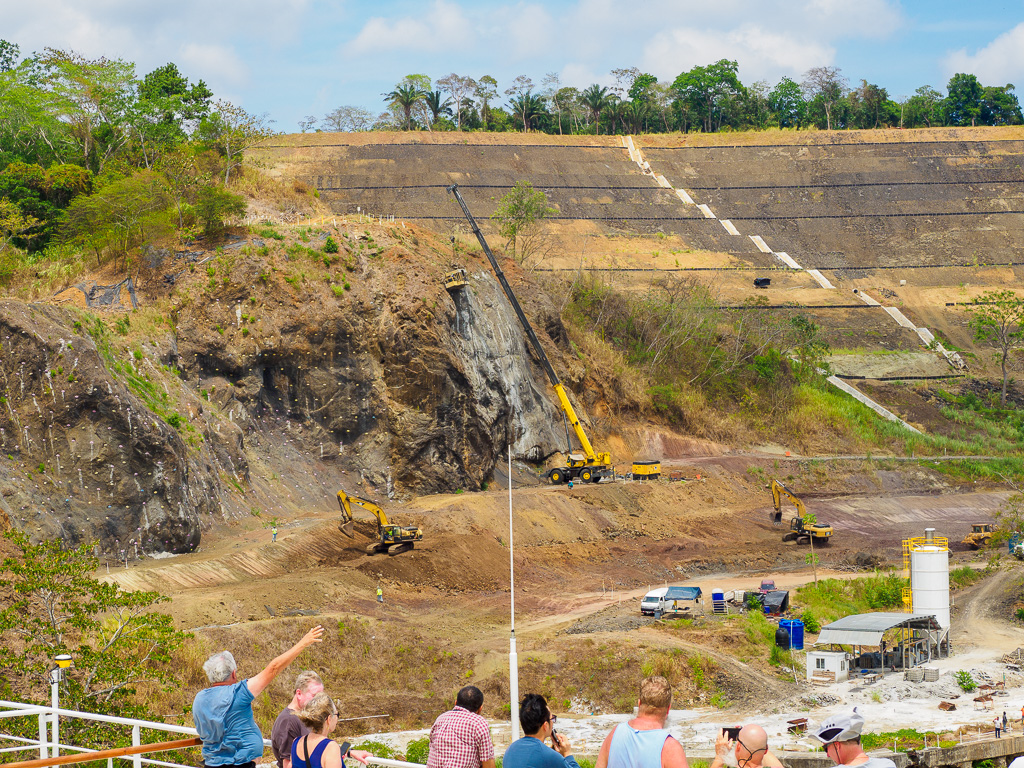

Reaching the Pacific
Now the Pacific is in sight. Just as on the Atlantic side, it takes three locks to handle the 27 m change in level down to the ocean.
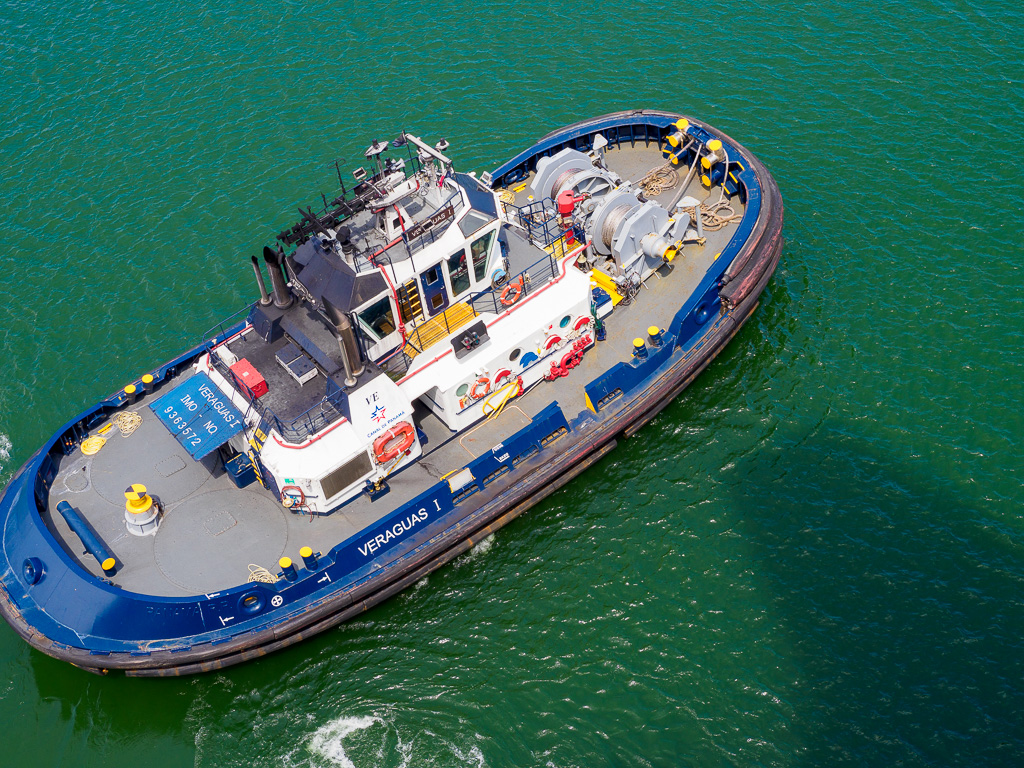
Port operations in the last set of locks before Panama City
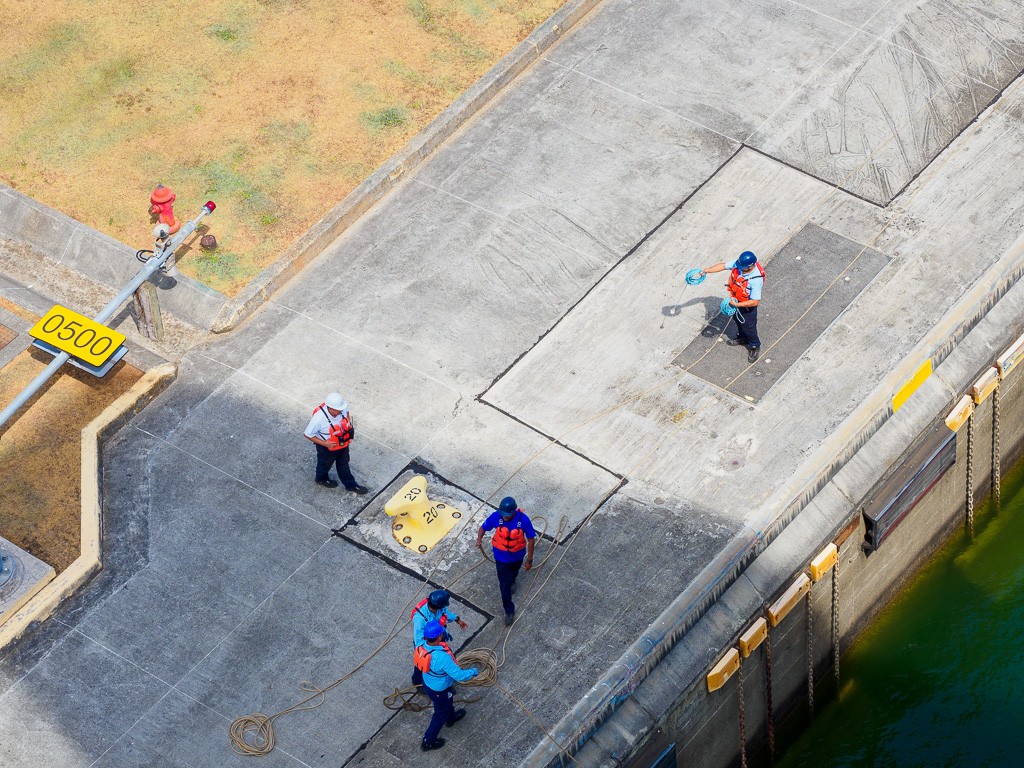
Shepherding a large ship through each lock requires the coordination of a team of dockworkers.
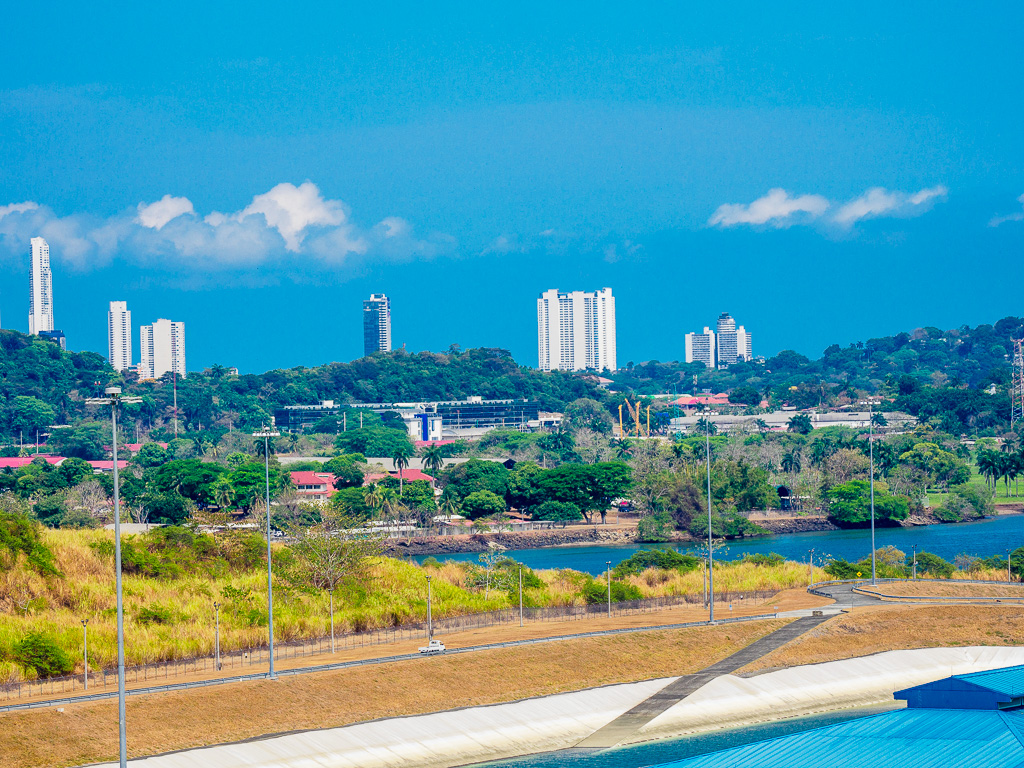
Panama City
This is the capital and largest city of Panama, with a population of 2.1 million.